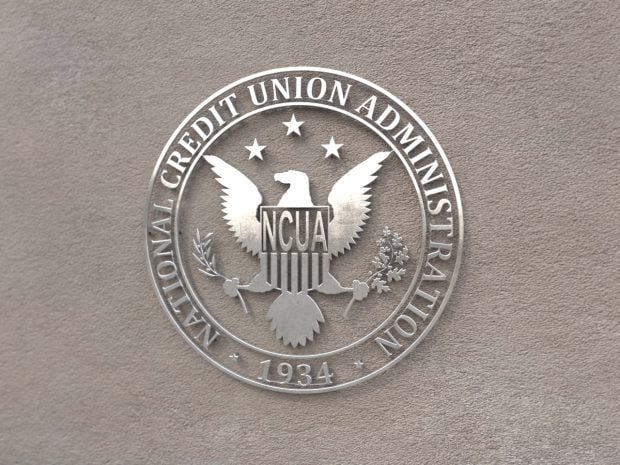 Source: Shutterstock.
Source: Shutterstock.
The 1980s brought us DOS, junk bonds, bag phones and a quaint British interest rate convention called Libor that became common fine print in contracts to set variable rates.
On Dec. 31, Libor is scheduled to start dying, with its remaining parts to be buried 18 months later.
Recommended For You
The British Bankers' Association adopted the "London interbank offered rate" in 1986, which was used in contracts from credit cards to interest-rate swaps.
Unfortunately, fraudsters figured out how to game Libor, a practice exposed in 2008. Attempts were made to fix its vulnerabilities, but in 2017 the Bank of England threw in the towel, saying Libor would be phased out by Dec. 31, 2021.
The International Swaps and Derivatives Association (ISDA) estimated in 2018 that Libor was tied to $370 trillion in derivatives, bonds, loans and other instruments.
According to Bloomberg, major global banks will spend more than $100 million this year preparing for Libor's burial.
So what about credit unions?
NCUA Chairman Todd Harper sent a letter to credit unions earlier this month telling them it would be swell to have a plan that cuts their ties to Libor by year's end. At the least, they should make sure their contracts provide alternative rates.
"The Libor transition is a significant event that credit unions should manage carefully," Harper wrote.
"The NCUA encourages all federally-insured credit unions to transition away from using the U.S. dollar Libor settings as soon as possible, but no later than December 31, 2021," he wrote. "Failure to prepare for Libor disruptions could undermine a federally-insured credit union's financial stability, and safety and soundness."
Harper noted the Libor administrator announced March 5 that it would cease publishing the one-week and two-month Libor settings after the Dec. 31 publication. It said it would publish some other common Libor rates until June 30, 2023.
"While the extension of the publication of certain Libor settings through June 30, 2023, is not an opportunity to continue using Libor, it will allow some legacy Libor contracts to mature naturally," Harper wrote.
In an attached supervisory letter, Myra Toeppe, director of the NCUA's Office of Examination & Insurance, provided guidance to assist examiners' assessment of a credit union's preparations in transitioning away from Libor to an alternative reference rate or rates.
"While some smaller and less-complex institutions may have limited exposure to Libor-indexed instruments, the transition to alternative reference rates will affect almost every financial institution," she wrote.
Contracts should include a clearly defined alternative reference rate to Libor. "Robust fallback language also involves specifying a set of triggers, a spread adjustment and some description of the conforming changes that are necessary."
Federallyinsured credit unions should measure and report their exposure to senior management and their governing board. "The exposure reporting should include product details for the number of and total balance of contracts and the costs associated with transitioning away from Libor," Toeppe wrote.
Their analysis should include vendors, and they "should establish a contingency plan in the event a service provider is unable to deliver a timely solution."
The NCUA said it does not endorse a specific replacement rate for USD Libor. However, Toeppe's letter noted that the Fed's Alternative Reference Rates Committee (ARRC) in 2017 selected the Secured Overnight Financing Rate (SOFR) as its recommended alternative to dollar-denominated Libor. The SOFR is a broad Treasuries repurchase financing rate and has been produced by the Federal Reserve Bank of New York on a daily basis since the second quarter of 2018.
Toeppe's letter described some of the areas where Libor lurks:
Adjustable-rate mortgages (ARMs) are the most common credit union habitat where Libor serves as a reference rate. Toeppe said one work-around is for credit unions to originate an ARM using loan underwriting standards established by a government-sponsored enterprise (GSE) such as Fannie Mae or Freddie Mac. "The GSEs also provide fallback language that describes the steps that will be taken if Libor is no longer available, and how a replacement index will be substituted under a variety of circumstances."
Student loans are another common place for Libor-indexed loans owned by credit unions. "Given the potential for a high number of individual student loan accounts and the likelihood of frequent instances of address/employment changes, student loans may present difficulties in communicating loan rate changes to a borrower," she wrote. "If a credit union holds a significant number of Libor-indexed student loan accounts, examiners may consider reviewing the credit union's transition plan, check for fallback language and determine if the credit union has dedicated sufficient resources to modify Libor-indexed student loan accounts."
Investments will also harbor many Libor indices, but should present a lower concern. For one thing, GSEs stopped issuing new Libor-indexed securities as of Dec. 31. While legacy Libor-indexed securities remain a significant percentage of variable rate assets held by credit unions, Toeppe wrote that these investments typically have bond trustees that represent investors "who are responsible for implementing robust fallback language to a new reference rate or rates in the transition away from Libor, which allows examiners to review such holdings with a low level of concern."
Interest rate derivatives are the most fecund ecosystem for Libor, but credit unions have little of that financial turf. Toeppe provided compelling explanation involving ISDA fallbacks and protocols that became effective Jan. 25.
On top of all that, a substantial number of financial contracts that reference Libor are governed by New York law, and the state passed legislation in April "to minimize the legal uncertainty and adverse economic impact associated with the Libor transition."
© Touchpoint Markets, All Rights Reserved. Request academic re-use from www.copyright.com. All other uses, submit a request to [email protected]. For more inforrmation visit Asset & Logo Licensing.







